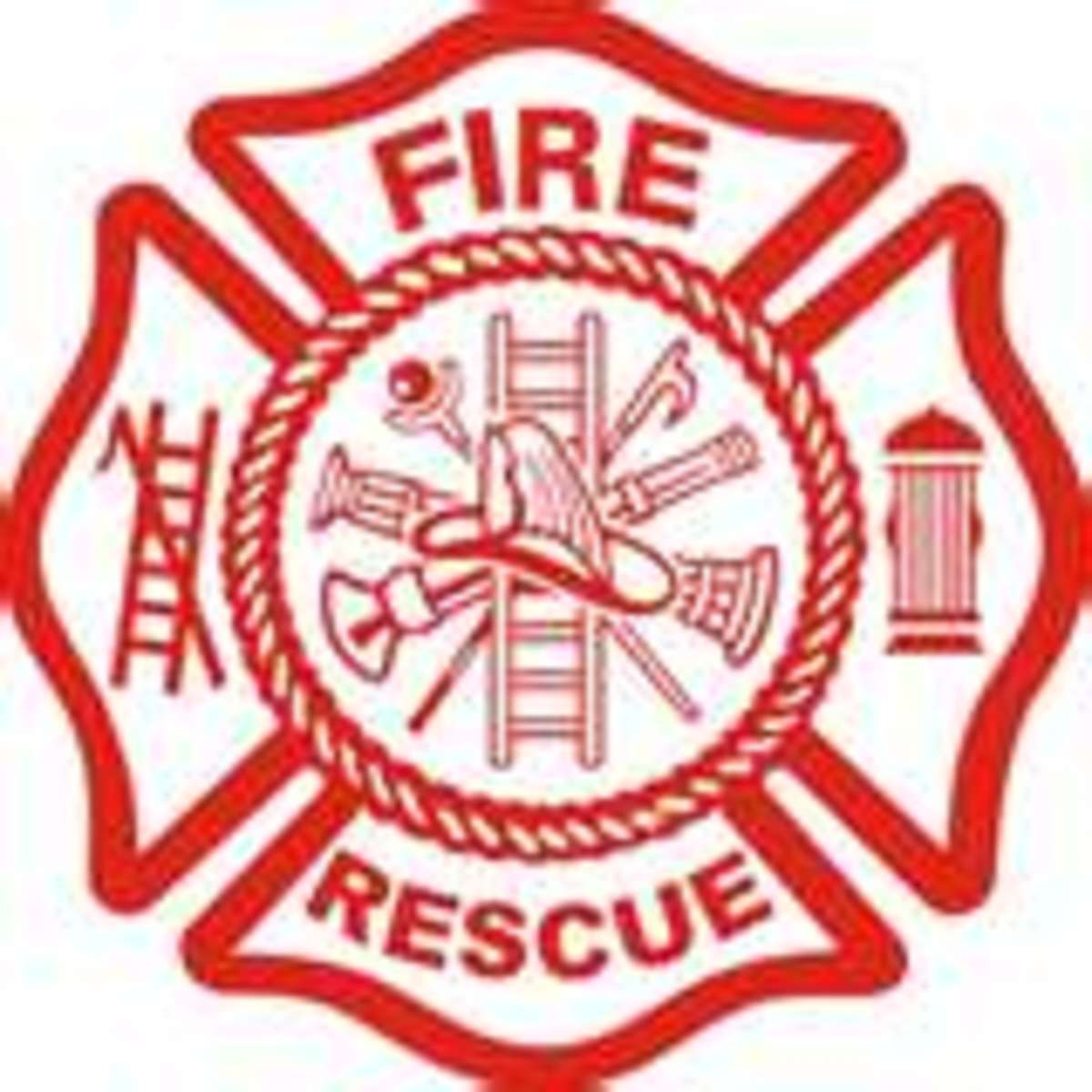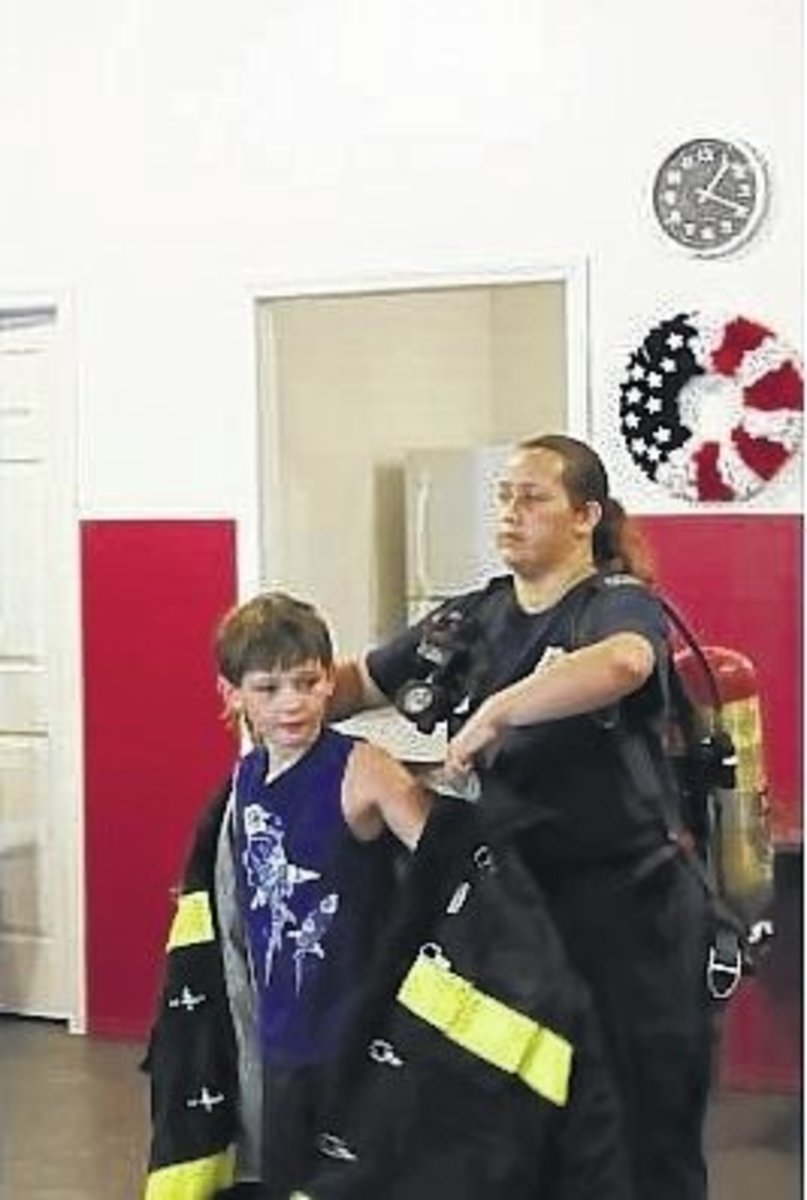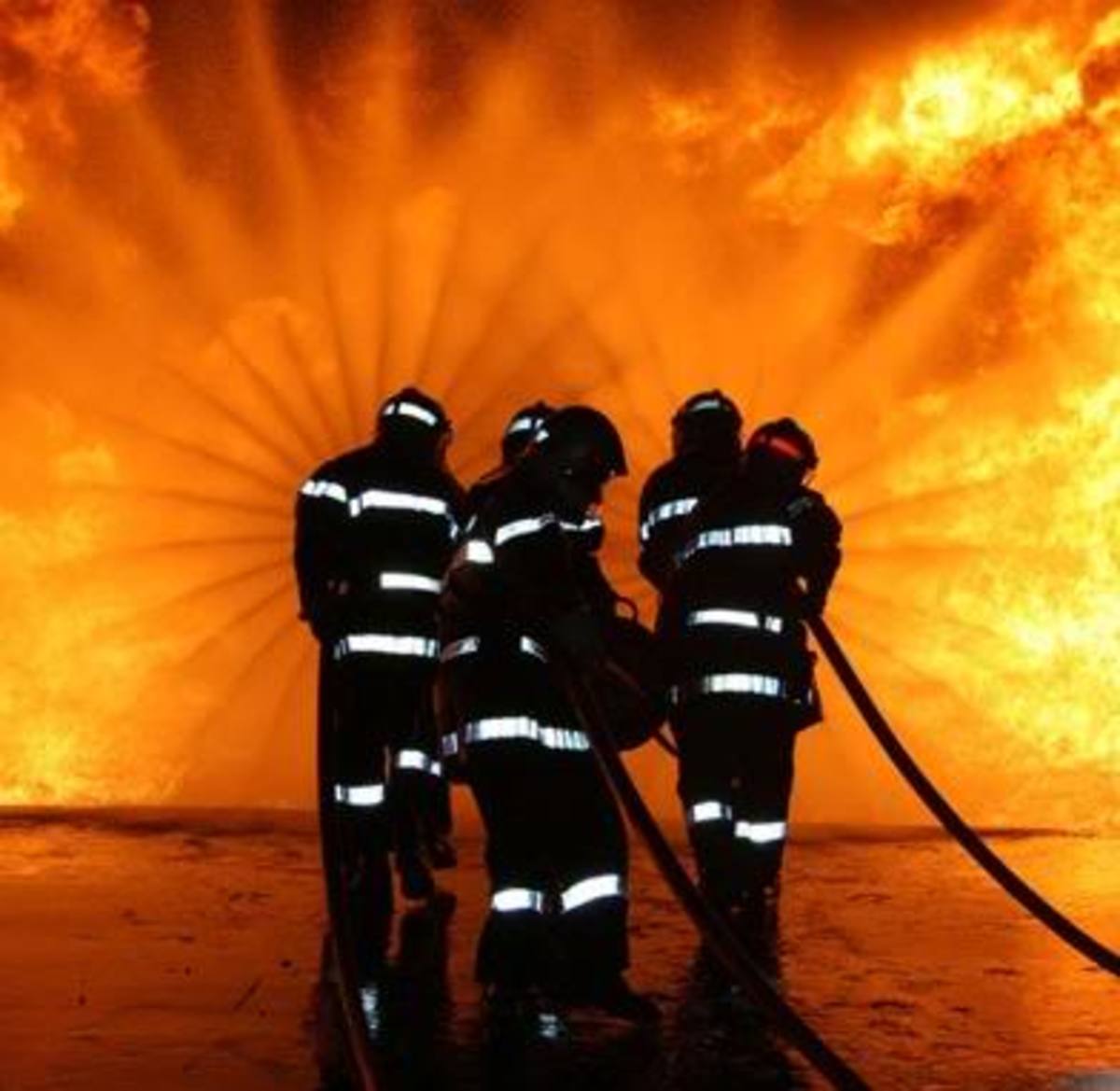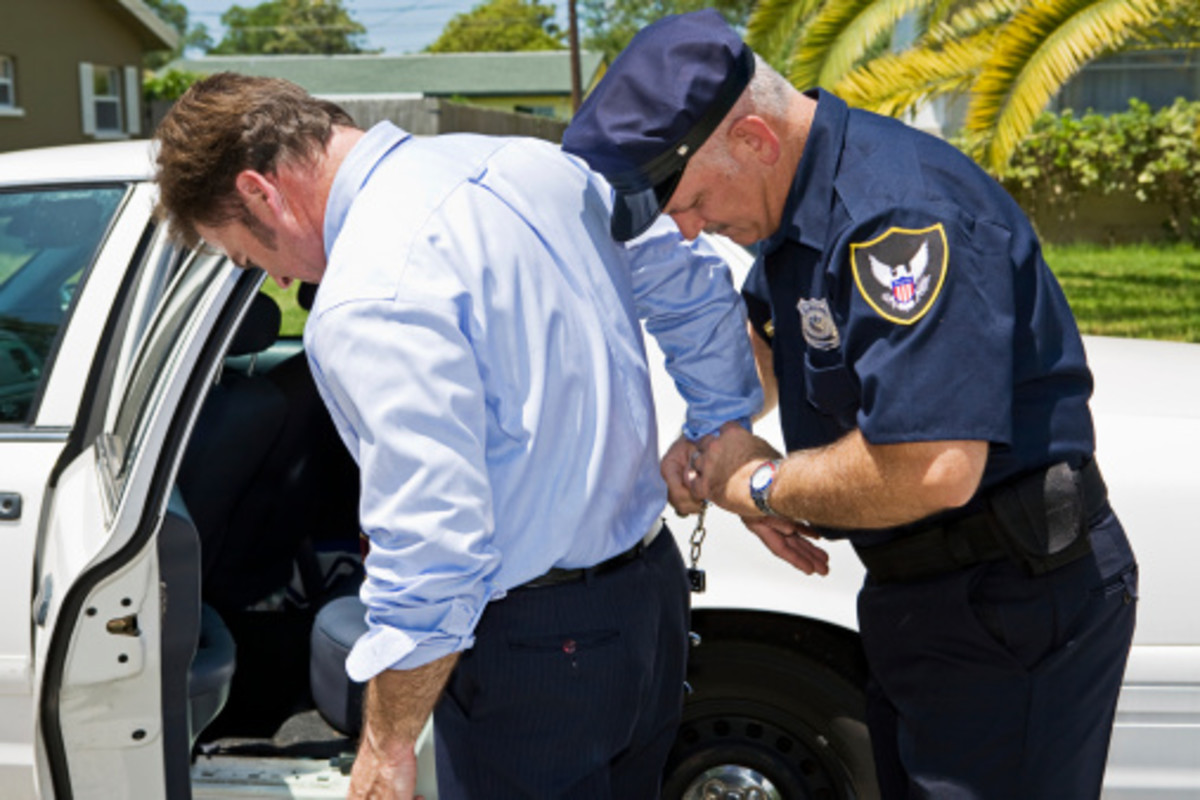Let's Talk Fire: Why Are Firefighters Still Dying
Why are firefighters still dying?
That is what many of us choose to refer to as a million dollar question. I accept it as such because there are probably 1 million legitimate answers to the question itself. It has never been a secret that the career of a firefighter is a highly dangerous one. No One ever denied that the job of a firefighter is to risk life and limb on a daily basis. We train to prevent injury and loss but why is it sometimes we throw that training to the side and try to approach situations blindly? I felt perhaps it was time that Let's Talk Fire explored that million dollar question. Why are we still getting killed on the fire scene?
In tackling this question I decided to use one of the most pivotal case files in my studies as a firefighter. This case is more relevant to our on scene operations than most firefighters could ever imagine. I have always pushed for the belief that we learn from the past for survival in the future. Case files like the one I will be exploring in this text allow our fallen brothers and sisters to not have died in vain. Where their mistakes may have brought an end to a heroic career and life, we can learn from them and many lives in the future may be saved as a result. I want to focus on several issues that have been a leading cause to firefighter line of duty deaths. Three of these issues in particular come to mind. Communication, accountability, and training seem to top the list of deadly foes to firefighters. Sadly each is a frequent visitor to the fire scene and will most likely continue to be for some time. Often it isn't one of these factors alone serving as the catalyst for disaster but a combination of the three in various forms that builds a recipe for tragedy and a call for concern to firefighters.
Bricelyn Street
The most disturbing case file I can imagine as far as firefighter fatalities that could have easily been avoidable is that of Bricelyn Street. If ever a case existed when firefighters should not have and most certainly did not have to die this would be the one. Pittsburgh, Pennsylvania lost three firefighters that cold cloudy February night. 3 firefighters who did not have to die and by all accounts should not have. I came to know the case of Bricelyn Street through a firefighter survival class I received my probie year on my home department. To say that this file bothered me would be a gross understatement as I really stepped back and started to view what I was doing and decided that to be a good firefighter I would have to stay focused and drop the blinders we firefighters are so famous for.
While reading this study you will hear several things that will obviously seem like a misprint or typo. It is hard to believe that some of the stuff allowed to happen on this fire scene happened. I would like to encourage you to take a hard look at the issues presented here and evaluate if your department may have the same problems. If so remedy them, and do it quickly. Never treat a fire of any nature as routine. Complacency kills firefighters and will continue to do so until we treat each call as an individual thing.
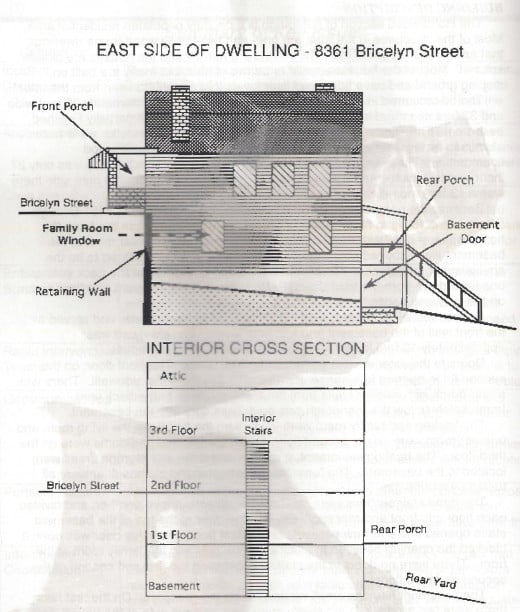
The 1st Mistake
Engine 17 was the first to answer the call arriving at 0027 hours. A frantic homeowner guided them to 8361 Bricelyn Street where heavy smoke was coming from the front porch. The captain entered the structure. He was in the structure for about 3 minutes. He returned and ordered his crew to advance a 1 3/4 hoseline into the structure. This may appear to be a typo to the seasoned firefighter. I wish it was.
The captain of engine 17 simply walked into the structure and than ordered a crew to fire suppression inside. Not once did it ever occur to him to conduct the standard 360 degree size-up. Training tells us that is what the first arriving personnel do. A size-up involves going completely around the structure and using what information you gathered in doing so to comprise a plan of action. Several factors can be determined by the size-up. The structure type, where the fire may be and where to position apparatus. This failure to get an idea of the structure would prove devastating.
From the A side he was looking at a 2 story dwelling with possible attic. That is what he sent his crew into. Had he taken the time to conduct a size-up he would have seen that the house actually had a story below street level and a basement below that. Crews inside the house had no clue they were actually working 2 stories up. This lack of knowledge would be a major factor in events that would come to pass before that cold night drew to a close.
3 Common Mistakes that Lead To Firefighter Death
- Lack of Communication
- Lack of Accountability
- Failing to Use Training
Accountability Board
The 1st Bad Day
At 0046 hours requested a second alarm. Conditions had clearly become worse and the smoke was becoming a visual hazard. The captain of Truck 17 was busy on the roof performing ventilation duties. The captain radioed in that the fire was into the walls and was using void spaces to navigate to the attic area. With fire spread so rapid he decided to exit the roof and enter the structure. His hope was to inform the crew from engine 17 of the fire's spread and intensity.
The captain followed a hoseline into the house, navigating through heavy smoke and heat. He went down a hallway and took a turn and it was there that he encountered an unexpected event. The floor gave way. He fell on to the basement steps. A basement that firefighters on scene were unaware even existed. He could see flames and feel the heat but a hoseline was spraying the fire which gave him enough protection to allow for his self rescue by climbing what was left of the stairs to safety. There in the family room section of the structure the captain of engine 17 was discovered. 3 crew members were also present with the captain. The truck captain than exited the structure. He had encountered a near miss situation that could have been avoidable if only more information had been gathered by the first person on the scene.
Skip Breathing
Another Bad Day A Comin'
Shortly after the truck 17 captain left the structure engine 17's crew would realize they were low on air. They needed to get out of the structure but the issue was they did not know how to do so. They were trapped in the family room and their air depleted completely. To make a bad matter worse the hose they had been using had been drug over the opening at the stairs and was burnt into. At this point one of the men inside loosened or removed their mask. They attempted the buddy system to share the scarce amount of air that remained. Due to a combination of carbon monoxide and oxygen deficiency the three firefighters were rendered unconscious/ The captain had also been severely weakened by the CO in the air.
At 0056 hours a firefighter with engine 18 broke out a window in the family room. He heard the low pressure alarm of an SCBA and some faint moaning. The firefighter made entry through the window and discovered the captain . With assistance from emts and other firefighters the man was pulled to safety through the window. At 0058 hours battalion 3 signaled firefighter down and at 0101 an all clear on the fallen firefighter was issued. The captain told the crews outside that more firefighters were inside and he had feared they had perished. Firefighters quickly darted to the side of the structure where 2 more firefighters had made their way out the window. These firefighters were part of engine 19's crew. The crew from engine 17 remained clouded in smoke and immobilized on the floor.
Call the mayday!!!
Confusion, Confusion, Confusion
Engine 19 had originally been held back at the door due to heavy heat and smoke. One member of the crew was stationed on the porch while the driver doned his gear and joined him. As the two entered the structure, following the hoseline laid by engine 17 with the driver taking the lead they both fell into the hole at the stairs. Upon landing they had seen the lights from the window that was previously taken out in the family room and made their way to the window where they escaped the structure.
Here is where the dangers of a lack of accountability and communication play a fatal role in the lives of three Pittsburgh firefighters. After the 2 engine 19 firefighters were declared safe an EMS channel reported at 0106 hours that there was firefighters not accounted for. At 0107 "17 captain states 3 men in, 3 men out". 2 minutes later on the same EMS frequency the report would state "3 firefighters down, one still missing." The EMS supervisor and the acting deputy fire chief went to the rear yard and confirmed three firefighters had been rescued. At 0110 a 3rd alarm was issued. At 0116 EMS reported all firefighters accounted for. Engine 17's crew still lay unnoticed on the family room floor. The attic was now involved and as newly instituted command staff formulated an attack plan they remained unaware that three of their own were still inside.
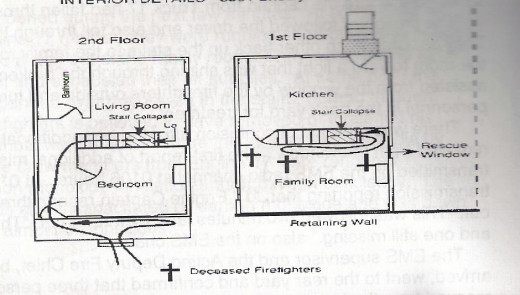
The Grim Discovery
Engine 7 advanced a line into the rear porch attacking the fire in the kitchen area. While engine 18 began an attack in the basement. The joist under the kitchen floor had suffered significant fire damage and had begun to sag under the lack of support. This created a large scale issue and it took engine 7 sometime to reach the family room. The smoke had diminished a good deal and visibility had almost been completely restored.
As engine 7 continued their planned attack into the family room they saw a sight that would forever stay with them. It would haunt them for years to come. There in the floor of the family room were three victims. All three firefighters. A crew entered and removal of the three fallen went off without much delay. All 3 firefighters were in cardiac arrest. The fire would present no more problems for the department, it had taken what it needed.
Engine17's brave souls went on that day, went on to answer a call that all of us will eventually make. Behind they left friends, family, and a department to mourn. All the while asking why did they have to die, why?
Don't let it happen to you!
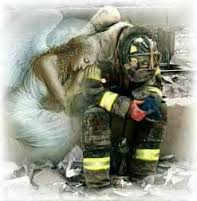
What killed the crew of engine 17?
The question was why did they have to die? I wish I could give you a philosophic answer, something that would set the hearts of the service at ease, but I can't. The sad and disturbing answer is simply they didn't have to die. Death was avoidable and did not have to knock at the door of the house on Bricelyn Street.
The first mistake was a lack of a size-up. Not knowing what was really going on presented the crews with numerous issues that would hinder the entire operation. Had a size-up been conducted the fires location in the basement would have been discovered and crews would have never been inside on the upper levels.
Training played another role as well in the loss of these three brave souls. If you examine where the three firefighters were found you will notice they were very near the window. Had they simply gone to a wall and started working their way to the right as we are all trained to do they would have been able to get to a point where they could escape the structure. We are trained to remain calm and focus but in the heat of the moment that is quite a task.
Communication and command were lacking on this scene in ways I can't even imagine. No One assumed command at the beginning of the incident creating a widespread freelancing operation that had crew doing things that were routine to them without ever being ordered to do so. All 1st alarm companies committed themselves to various operations based on their own initiatives. That in and of itself is a dangerous way to pursue fire ground safety. By the time a battalion chief assumed command it was already to late to pull back and reassign crew members. Sadly the acting incident commander had no first in report to build strategy on because no one felt the need to complete a solid 360 degree size-up of the scene upon arrival. There was no accountability in place thus the commander had no idea where everyone was and what they were doing at the scene. All he had to go on was what he could visually inspect.
Engine 17 failed to radio their location within the structure, fire conditions, or any other data that may have assisted other firefighters on the scene in any way. Despite radios being issued transmissions were few and far between for the most part and it really seemed like a communications structure had never been developed for this department even though prior calls state otherwise. When radios were actually used it was to deliver an all clear that all firefighters were safe and accounted for while three of the crew lay in a smoke filled room unnoticed by their collegues outside.
Free Training Resources
USFA Publications- A great assortment of materials including case studies, manuals and training DVDs.
Firehouse- An amazing resource to find drills and training exercises.
Other Factors
Communications, or lack of communication to be exact also created hassles in the fact that EMS operated on a separate frequency than that of the fire department, despite the fact they are both called to work scenes together. This meant any communication through the two agencies had to be direct and face to face. This created issues in coordinating the two separate entities. This could have been why the EMS supervisor gave an all clear unaware that engine 17's crew were inside fighting for their lives. One real concern was why did engine 17 not initiate mayday procedures. The radio they had was working and could have been used to radio for immediate help. Once again our training only saves us if we use it.
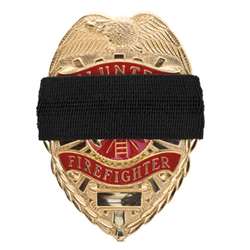
In The End
Three firefighters lost their lives at a fire that was not even all that bad according to those on the scene. But who decides how bad a fire is? While looking at this incident as a whole many avoidable mistakes are present. Mistakes that should not be found in this abundance at a fire scene were trained professionals are working. Had a system of accountability been set in motion there would have never been confusion about who was in the structure and who wasn't. That all clear by EMS may have never been given. Accountability would have been there to eliminate freelancing and made it a much safer and much more successful scene. Communication would have allowed crews to remain aware of the situation inside the structure as well as allowed crews to react quickly and made the rescue attempt sooner. If training would have been followed the crew of engine 17 would have never found themselves in the situation they were left in. These factors all combines to create unsafe work environments for all the firefighters who were present. In the end three people never went home to loved ones, they will never attend a training class and they will never again be able to tell someone they love them. The saddest part is it did not have to be this way.
Survive!!!
Key Factors
- Lack of Size-up- A well thought out 360 degree size-up would have alerted crews to the structure's real size. It could have allowed for the fire that was initially in the basement to have been located and handled before it was allowed to spread and before crews made entry on a floor above the fire. The three firefighters who lost their lives inside would have never had to go inside.
- Lack of Incident Command System- No one assumed command until well into the scene. This meant no one was assigned anywhere but instead crews used their own instincts to determine where they worked and what they did. The only crew assigned anything was engine 17, the crew who never returned from the flames.
- Lack of Communication- Had radios been utilized it would have been clear that firefighters were still inside the structure and greatly needed assistance. Communication would have also allowed engine 17 to inform the outside crews as to the conditions that were developing inside the structure as well as to make the mayday call that may have saved their lives.
- Lack of Accountability- No one had a clue who was where and what they were doing. Firefighters were inside the structure and no person on the outside had a clue to their position. This lack of knowledge caused confusion and chaos which is what we are there to prevent. If the crew of engine 17 had been listed on an accountability system they would have never perished in the fire at Bricelyn Street that cold night.
- Following Training- I can't say with certainty that proper training had been given to the responders of that fire but I would imagine it had. I can say that if it were given it was not used! No size-up, no ICS, and an abundance of freelancing are all prime ingredients for disaster. The three firefighter from engine 17 heard their low air alarms but failed to make the necessary actions needed to ensure their safety. When lost in the smoke and running low on air they could have called for a mayday that would have given them a fighting chance at survival, but they failed to do so. They attempted to buddy breath, a system of sharing air from one cylinder to another. This is a dangerous concept. We are taught it is better for the firefighter with air remaining to try to assist the others with escape. So many simple fixes that would have prevented engine 17 from suffering such a loss. Fixes that should have never had to be made in the first place.
Conclusion
Train to gain. There is no way to stop firefighters from dying during the job. We work in conditions that are just to unstable to control completely. The job is dangerous. We can however control our actions and the actions of our department. This will decrease the death rate among firefighters. We know the value of communication, the worth of accountability and we completely understand the importance of training. We must use the tools and resources we have to our advantage. We have to ensure that we are going back home at the end of the scene. I hope the mistakes made on Bricelyn Street are never forgotten. I hope they rest, be it an uneasy slumber, at the back of every firefighter's mind when they respond to a scene. Learn from the past for survival in the future.





